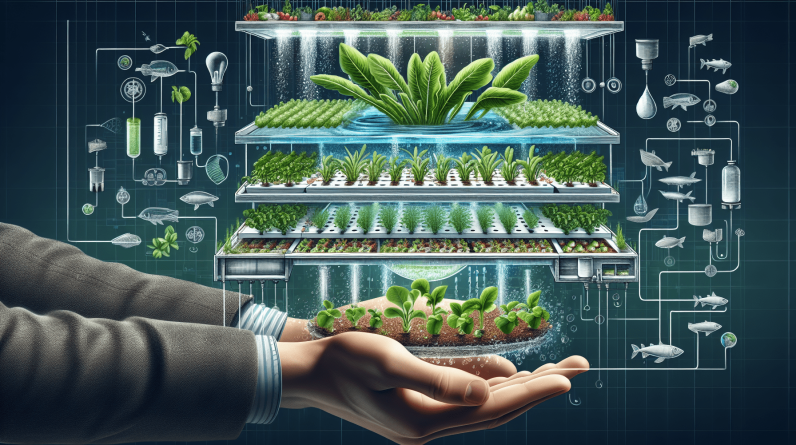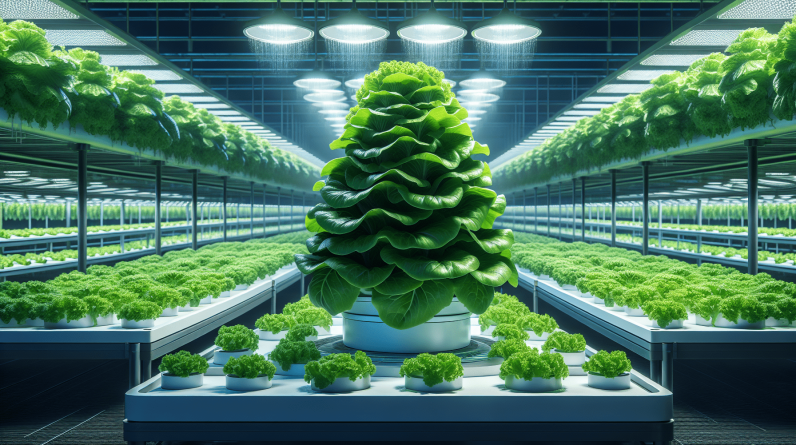
Have you ever wondered how you can grow your own fresh and nutritious vegetables indoors, without the need for soil? Hydroponic gardening might be the answer you’re looking for. If you’re new to this innovative growing method, not to worry; we’ve got you covered with some top tips to help you get started with growing hydroponic vegetables indoors.

Understanding Hydroponic Growing Systems
If you’re unfamiliar with hydroponics, it’s a method of growing plants without soil by using a nutrient-rich water solution. This alternative gardening technique has become increasingly popular due to its numerous benefits, such as faster plant growth, higher crop yields, and water conservation.
Benefits of Hydroponic Growing
Hydroponic systems offer several advantages over traditional soil gardening methods. By delivering nutrients directly to plant roots, they promote faster growth and higher yields. Additionally, hydroponic systems use significantly less water than soil-based methods, making them more environmentally friendly and sustainable.
Choosing the Right Vegetables for Hydroponic Growing
Not all vegetables are suitable for hydroponic cultivation, so it’s essential to choose the right ones for your indoor garden. Leafy greens like lettuce, herbs such as basil and mint, and certain fruiting plants like tomatoes and peppers are generally well-suited for hydroponic systems.
Best Vegetables for Hydroponic Growing
When selecting vegetables for your hydroponic garden, consider crops that thrive in nutrient-rich water solutions and don’t require extensive root systems. Leafy greens such as spinach, kale, and arugula are popular choices, as they can easily absorb nutrients from the water and grow rapidly in hydroponic setups.
Setting Up Your Hydroponic Garden
Creating a hydroponic gardening system indoors is relatively straightforward, requiring some basic components and equipment. Whether you opt for a simple water culture setup or a more advanced drip irrigation system, setting up your hydroponic garden can be a rewarding and enjoyable experience.
Essential Components for Hydroponic Gardening
To get started with growing hydroponic vegetables indoors, you’ll need a few key components, including a reservoir for holding the nutrient solution, a pump for circulating the water, inert growing medium for plant support, and adequate lighting for plant growth.
Choosing the Right Hydroponic System
There are several types of hydroponic systems available, each with its own set of advantages and considerations. From deep water culture (DWC) to nutrient film technique (NFT) setups, selecting the right system for your indoor garden depends on factors like space availability, desired crop type, and personal preference.
Popular Hydroponic Systems for Indoor Gardening
Deep water culture (DWC) systems are ideal for beginners, as they are simple to set up and maintain. Alternatively, nutrient film technique (NFT) systems are well-suited for growing leafy greens like lettuce and herbs, due to their efficient nutrient circulation and oxygenation.

Maintaining Your Hydroponic Garden
Once your hydroponic garden is up and running, proper maintenance is crucial to ensure healthy plant growth and optimal yields. Regular monitoring of nutrient levels, pH balance, and lighting conditions will help you create an optimal growing environment for your hydroponic vegetables.
Tips for Maintaining a Healthy Hydroponic Garden
Maintaining proper nutrient levels in your hydroponic system is essential for plant growth, so be sure to check and adjust nutrient solutions regularly. Monitoring pH levels and providing adequate ventilation and lighting are also key factors in maintaining a successful indoor hydroponic garden.
Troubleshooting Common Issues in Hydroponic Gardening
Like any gardening method, hydroponics may present some challenges along the way. From nutrient deficiencies to root rot and pest infestations, being prepared to address common issues can help you maintain a thriving hydroponic garden and enjoy a bountiful harvest.
Common Problems in Hydroponic Gardening
Nutrient deficiencies can occur if your plants are not receiving adequate nutrients from the water solution, leading to stunted growth and yellowing leaves. Similarly, root rot can develop if the roots are constantly submerged in water, causing plant damage and decay. Pests like aphids and spider mites can also pose a threat to your hydroponic crops, so preventive measures are essential to keep them at bay.
Harvesting and Enjoying Your Hydroponic Vegetables
One of the most rewarding aspects of hydroponic gardening is harvesting your home-grown vegetables and enjoying their fresh flavors and nutritional benefits. From vibrant salad greens to ripe cherry tomatoes, growing your vegetables indoors can provide a sense of accomplishment and satisfaction.
Harvesting Tips for Hydroponic Vegetables
When it’s time to harvest your hydroponic vegetables, be sure to use sharp scissors or shears to avoid damaging the plants. Harvest leafy greens when they reach the desired size, and pick fruits like tomatoes and peppers when they are fully mature. Enjoy the fresh taste of your home-grown produce in salads, sandwiches, or smoothies, and savor the flavor of your indoor hydroponic garden.
By following these top tips for growing hydroponic vegetables indoors, you can embark on an exciting gardening adventure and enjoy a bountiful harvest of fresh, nutritious crops all year round. Whether you’re a beginner or an experienced gardener, hydroponic gardening offers a sustainable and efficient way to cultivate your favorite vegetables in the comfort of your own home. So, roll up your sleeves, get your hands dirty (or not, since it’s soil-free!), and start growing your own indoor hydroponic garden today. Happy gardening!











